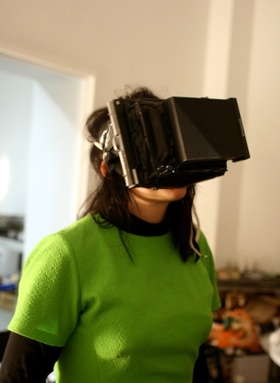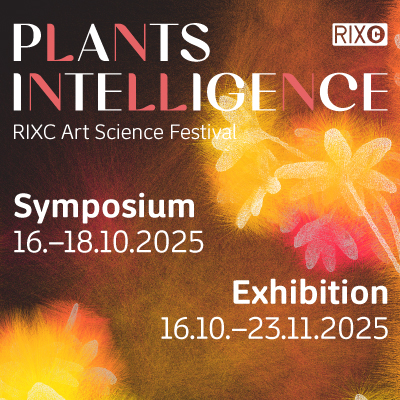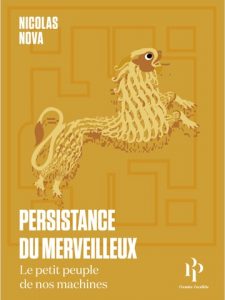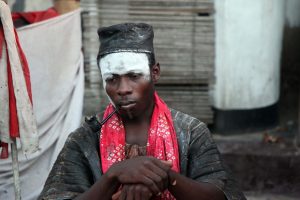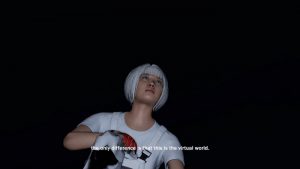In his book Gramophone, Film, Typewriter, Friedrich Kittler draws parallels between the introduction of a new media and spiritism. The Morse alphabet was quickly adopted in seances of spiritism to converse with the deceased. On some photographic plates one could sometimes discern the face of a ghosts. In 1893, Edison described the 10 uses he imagined for the phonogram and one of them was to record ‘the last words of dying persons’.
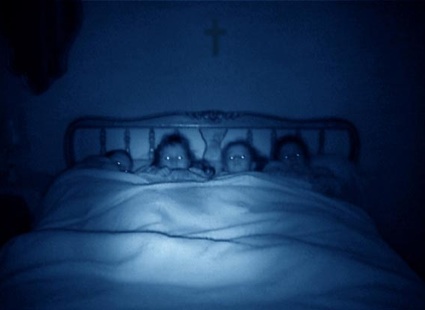 Agnès Geoffray, Night #6, 2005
Agnès Geoffray, Night #6, 2005
‘Awake Are Only the Spirits’ – On Ghosts and Their Media, an exhibition currently open at HMKV (Hartware MedienKunstVerein) in Dortmund, explores the presence of the supernatural, the manifestations of spirits, and (trans)communication with the beyond facilitated by technical media.
Curated by Inke Arns and Thibaut de Ruyter, the show aims to tell a ‘ghost story’ that explores the question of why, for all our enlightenment, irrational capabilities are regularly ascribed to the new media and technologies of a given time – for instance, the ability to act as a channel for messages from the beyond. The projects exhibited question the existence of ghosts, they explore the integration of new media and technologies in spiritualist contexts, make visible or perceptible the invisible and trace the political implications as well as the aesthetics of such contemporary transcommunication phenomena.
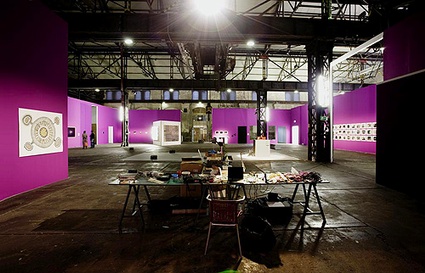 Exhibition view, PHOENIX Halle Dortmund, 2009, Martin Howse, The White Visitation, Workshop, 2009
Exhibition view, PHOENIX Halle Dortmund, 2009, Martin Howse, The White Visitation, Workshop, 2009
The selection of works is exceptional. It might sometimes seem that i’m disillusioned with media art and indeed i’m not finding much pleasure anymore in works and exhibitions that are more the result of techno-fetishism than of a meaningful and far-reaching reflection on technology. ‘Awake Are Only the Spirits’ has everything that makes me enthusiastic about media. The exhibition manages to be intelligent, spectacular (starting with walls painted in a mystic purple hue) and engaging in spite of what would look at first sights as a rather puzzling focus. ‘Awake Are Only the Spirits’ doesn’t just introduce you to some exciting artworks, it also makes you question your beliefs and your perception of the world.
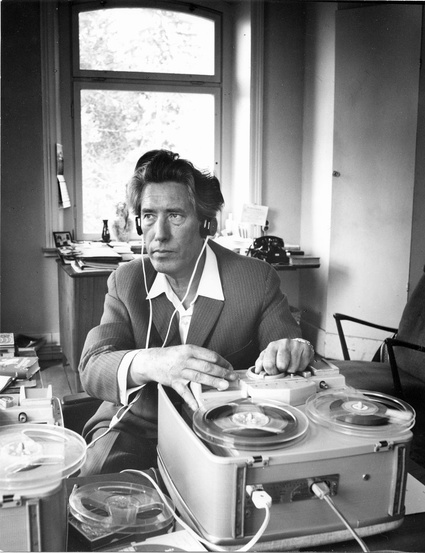 Friedrich Jürgenson (image)
Friedrich Jürgenson (image)
One of the starting points of the exhibition at HMKV is the audiotape archive of Friedrich Jürgenson who discovered in 1959 the Electronic Voice Phenomenon (EVP), electronically captured sounds that resemble speech, but are not the result of intentional voice recordings. In the 1950s, the painter, film producer and archaeologist found traces of extra voices on tapes with which he was trying to record birdsongs. He believed the voices were coming “from the other side.” Over the years, Jürgensen made thousands of recordings of the voices of the dead, from his family to Vincent van Gogh and even Himmler’s masseur.
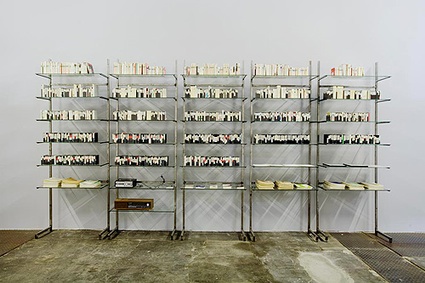 Exhibition view, PHOENIX Halle Dortmund, 2009, Friedrich Jürgenson, Audioscopic Research Archive, 1959-1987, courtesy ZKM | Zentrum für Kunst und Medientechnologie, Karlsruhe
Exhibition view, PHOENIX Halle Dortmund, 2009, Friedrich Jürgenson, Audioscopic Research Archive, 1959-1987, courtesy ZKM | Zentrum für Kunst und Medientechnologie, Karlsruhe
Jürgenson died in 1987 but the hundreds of tapes he recorded have been preserved, archived at the ZKM in Karlsruhe and are now part of the exhibition ‘Awake Are Only the Spirits’. The other archive in the show is the one of an anonymous Aachen-based researcher who recorded images of deceased persons he believed were appearing on a running tv set.
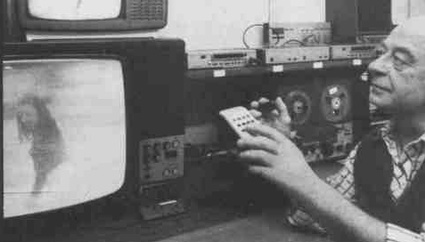 Klaus Schreiber (image)
Klaus Schreiber (image)
In the early ’80s deceased relatives of Klaus Schreiber informed him via EVP: ‘We’re on television, too’. Thanks to much efforts, money and time, Schreiber developed a method based on video feedback for distilling relatively clear images of his loved ones -including his two deceased wives- from the infinite expanses of bleary reflections. The Archive of an Anonymous Ghost-Seer curated by Hans W. Koch and presented at HMKV bears witness to this process.
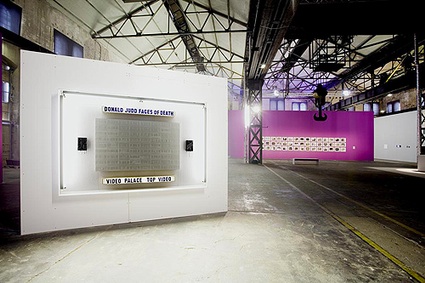 Exhibition view, PHOENIX Halle Dortmund, 2009, Joep van Liefland, Donald Judd Faces of Death, Installation, 2008, courtesy of the artist
Exhibition view, PHOENIX Halle Dortmund, 2009, Joep van Liefland, Donald Judd Faces of Death, Installation, 2008, courtesy of the artist
Donald Judd Faces of Death, by Joep van Liefland, responds directly to Schreiber’s findings on Instrumental Transcommunication (ITC). A large silkscreen poster displaying the blown-up image of a scrambled TV screen evokes the untuned screens where Schreiber used to see faces. Watch it as much as you want, no face ever turns up on Van Liefland’s installation. Not even on the video that is also part of the work. The installation also features an object made out of empty and glossy video cassette boxes, is an ironic take on Abstract Minimalism and Pop Art.
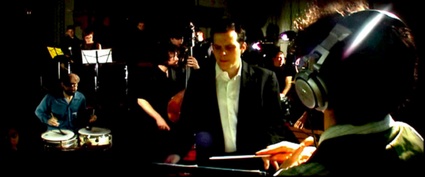 Jason and Lucas Ajemian, Out of Nowhere/From Beyond
Jason and Lucas Ajemian, Out of Nowhere/From Beyond
For some time, it was even rumoured that Black Sabbath’s song-Into The Void contained secret Satanic messages if played backwards. Jason and Lucas Ajemian transcribed the music and text of the track to create a new version, a project called Out of Nowhere/From Beyond. In the new version, the track is played backwards by a ten-piece orchestra with Jason Ajemian as the conductor and his brother singing phonetically in reverse.
Video of the artists discussing the idea and preparation behind From Beyond:
The performance was documented on video, but you can also get your hands on an audio recording pressed into 10-inch vinyl record. HMKV is also exhibiting the score printed on plexiglass as well as an original Black Sabbath cover splashed with Yves Klein blue as a reference to Klein’s work with voids.
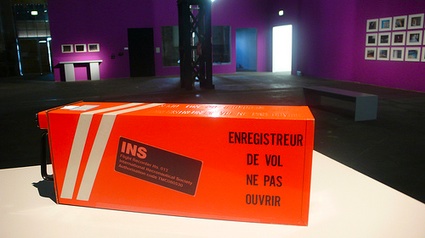 International Necronautical Societ, Black Box Transmitter
International Necronautical Societ, Black Box Transmitter
The International Necronautical Society (INS), a pseudobureaucratic organization founded in London in 1999, aims to examine radio in all its (necro-)poetical and also political aspects.
Black Box is comprised of a series of texts compiled by the author Tom McCarthy from local Dortmund radio shows, newspapers, and weather reports. These were transcribed and recorded onto a black box, from which the text lines are transmitted twenty-four hours a day via ultra-short wave (USW) which can be received in the vicinity of the PHOENIX Halle.
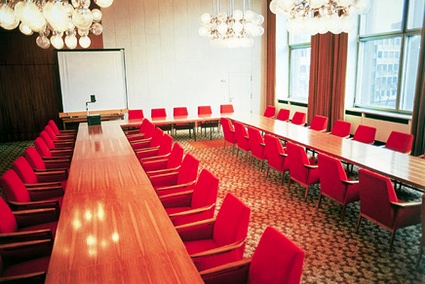
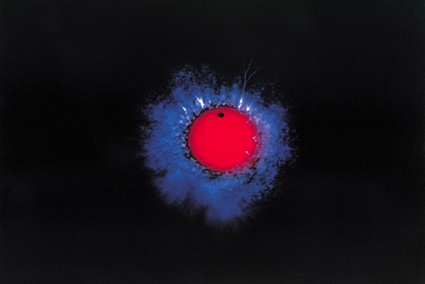 Aura Research, Honecker’s Office, Berlin, 1997
Aura Research, Honecker’s Office, Berlin, 1997
Nina Fischer & Maroan El Sani
Aura Research brings back to the spotlight the Kirlian photography, a high-frequency photography named after Semyon Kirlian and his wife who discovered in the ’30s that if an object on a photographic plate is connected to a source of high voltage, small corona discharges (created by the strong electric field at the edges of the object) create a bright luminous aurae on the photographic plate.
Fischer and El Sani took pictures of abandoned rooms which had been maintained throughout time. The site is represented from two viewpoints: colour photography shows the visible, whereas high-frequency photography depicts phenomena that usually remain invisible to the human eye. The photos refer to a 19th century belief that psychological activity generated discharges which could be recorded later. Could former occupants of the room really have left something there?
Kathrin Günter has invented a number of so-called ‘intraocular light eye cameras’, portable devices consisting of a Polaroid camera back mounted on a small black box which is strapped over the user’s head. Günter’s Polaroids are thus produced by the light emanating from the sitter’s eyes. The resulting picture is influenced by the interferences that occur during the ‘transmission’ process of the image from the retina to the instant photographic paper. Visitors are invited to wear the camera and record the images that have accumulated in their eyes.
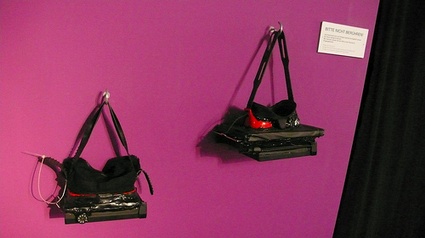 Kathrin Günter, The Clearing
Kathrin Günter, The Clearing
The exhibition continues until 18 October 2009 at Hartware Medienkunstverein Phoenix Halle, Dortmund, Germany. It is accompanied by a series of film screenings, lectures and workshops. Check out the HMKV website for more details. More images on flickr, Derwesten and HMKV.
Related: Spy Numbers at the Palais de Tokyo, an exhibition inspired by the shortwave radio stations that broadcast artificially generated voices mysteriously reading streams of numbers, words, letters, tunes or Morse code.

